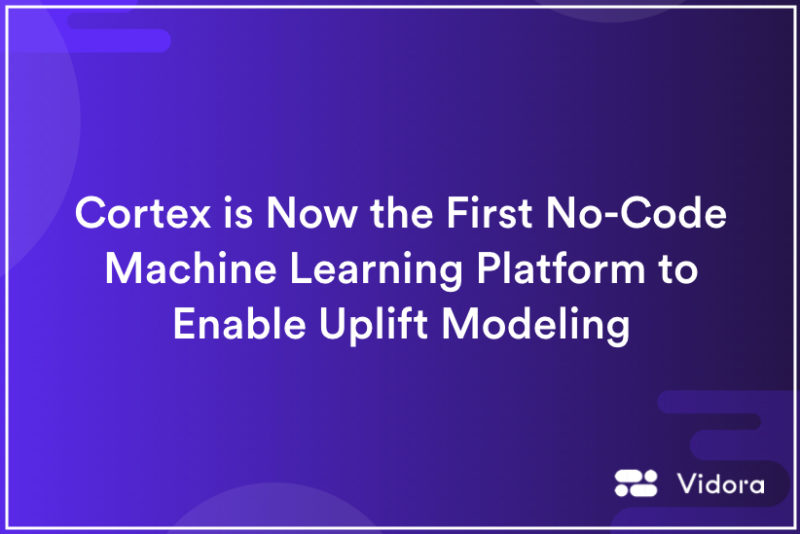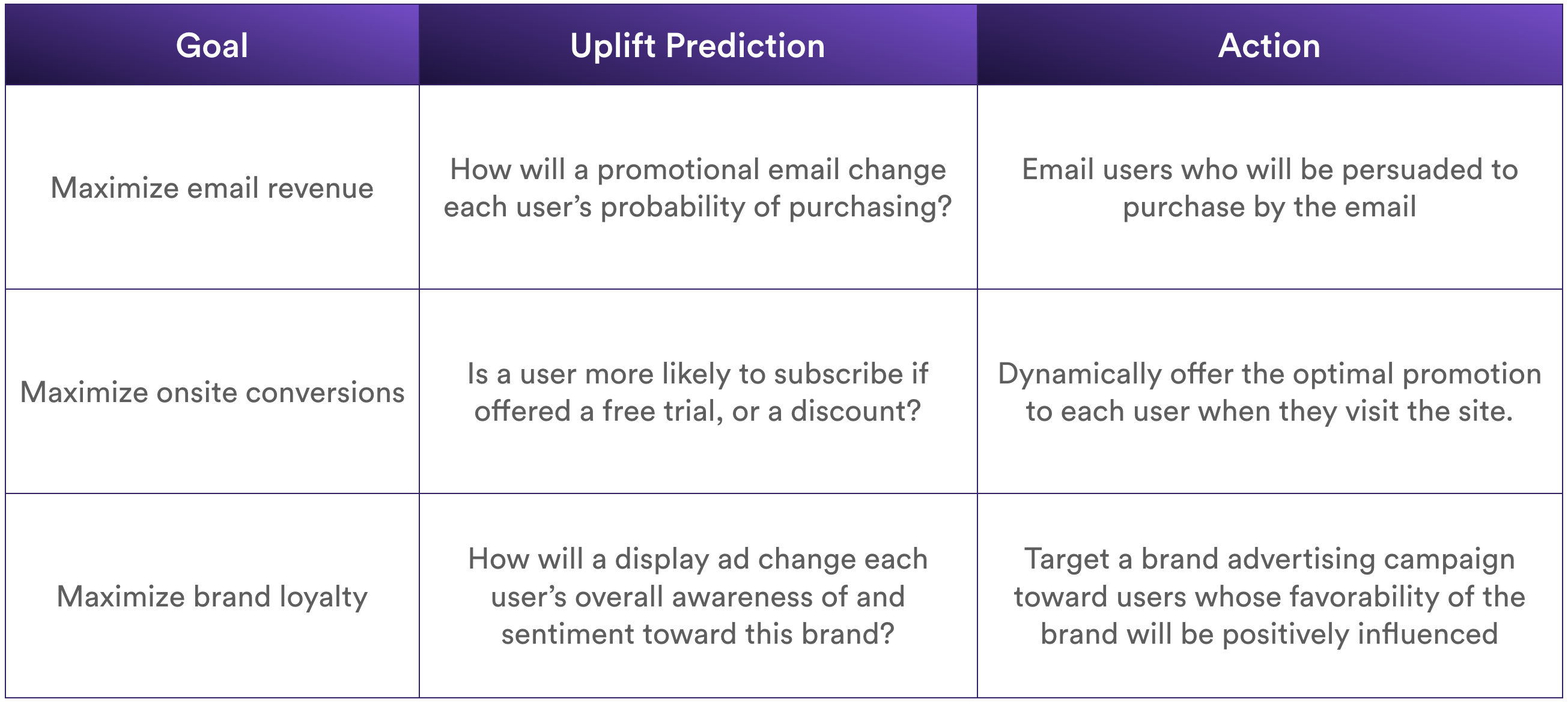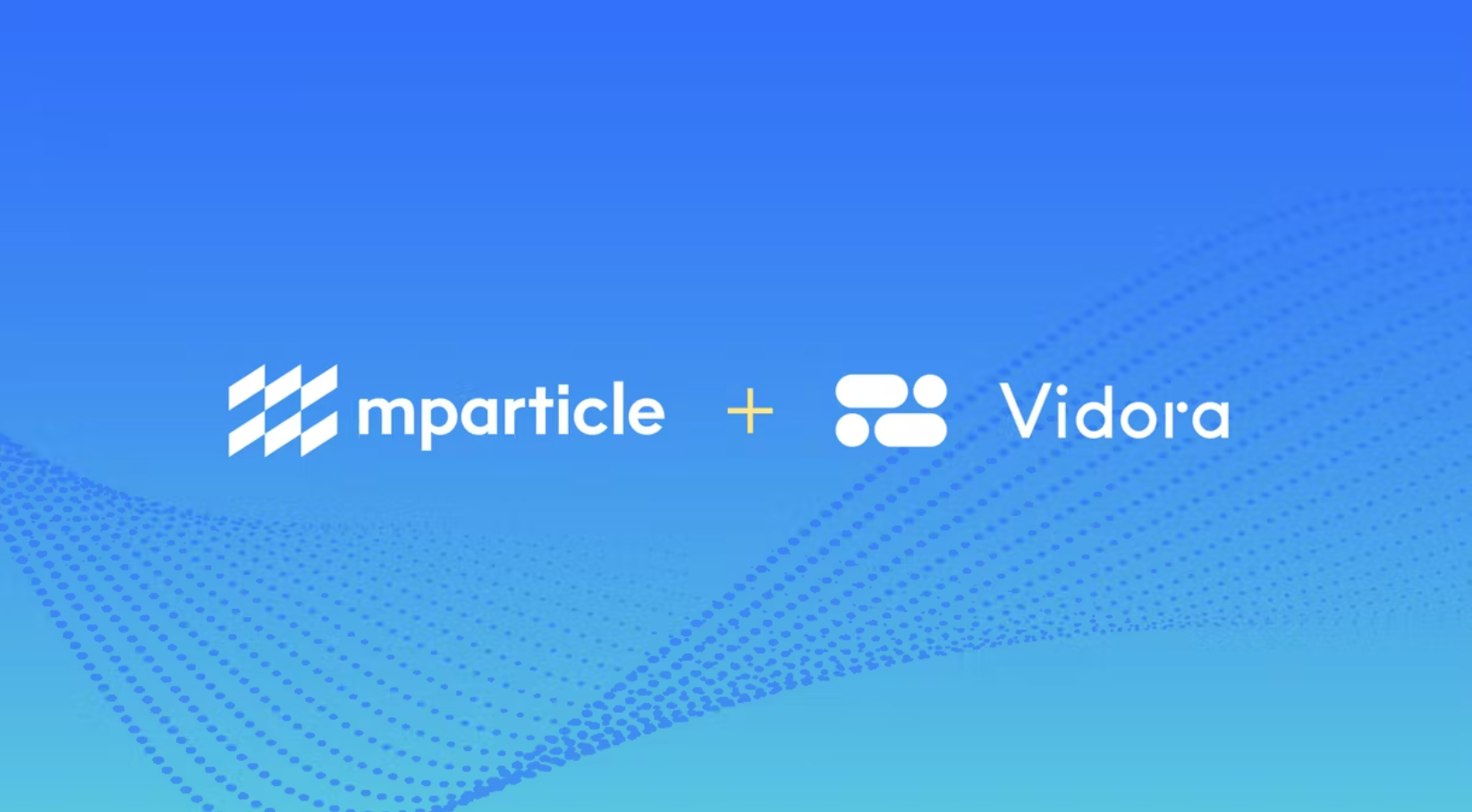
“How do we get our customers to do X?”
Marketing teams are constantly trying to answer some form of this question. For some marketers, X might be related to user acquisition. For others, X equates to engagement, or retention, or transactions. But no matter what business you are in, Uplift modeling is the most powerful tool a marketer can use to answer these questions.
However to date, Uplift modeling has not been easily accessible to marketers. That’s why today, Vidora is thrilled to announce that Uplift modeling is available to any organization through Vidora Cortex’s no-code Machine Learning interface. Despite its benefits, adoption of uplift has lagged due in large part to the difficulties in building and deploying high-performing Uplift Models. B2C giants like Uber have made big internal investments into Uplift to help lower these barriers for their marketing teams. Now, any organization can reap those same benefits with Cortex.
What is Uplift modeling?
Uplift is a Machine Learning technique which predicts how each customer is likely to respond to a given marketing action. For example, an Uplift prediction might tell you — “Customer A is 10% more likely to convert if targeted, compared to if they were not targeted.” If you know which customers will respond positively to your efforts, you can focus marketing efforts where they’re likely to drive the largest value.
Real World Product and Marketing Examples

Ecommerce and Uplift Modeling
For example, consider an eCommerce marketing team that is running a campaign to drive customer transactions via a product discount. Who should get the offer? Some customers might buy even without the discount, so targeting them means lost revenue. Others might not be interested in the product, even with a substantial discount. Including these customers in the campaign equates to wasted marketing cost and customers that feel spammed.
But what if the marketing team could predict which customers will buy if and only if they receive a discount? These are incremental purchases, and they’re exactly what Uplift modeling helps find. By targeting only the most persuadable users (i.e. those whose likelihood of purchase will increase with a discount), we can maximize the ROI of the campaign — i.e. minimize unnecessary spend while maximizing incremental revenue.
Benefits of Uplift Modeling
Uplift is a relatively new area of ML research, but it’s practical applications are quickly gaining steam. Data-driven B2C leaders like Uber, US Bank, Wayfair, and Intuit are doubling down on Uplift, recognizing the advantages of prescriptive ML compared to more traditional forms of descriptive and predictive analysis. Rather than simply predicting “what” will happen in the future, Uplift models take the extra step of informing “how” you can influence that future. This enables marketers to shed some of their implicit assumptions.
forms of descriptive and predictive analysis. Rather than simply predicting “what” will happen in the future, Uplift models take the extra step of informing “how” you can influence that future. This enables marketers to shed some of their implicit assumptions.

So why don’t more marketers use prescriptive modeling today? Prescriptive Uplift modeling has traditionally been harder to get right. Extra care must be taken to collect the right data and set up the model correctly when leveraging Uplift. This can be a challenging and resource-intensive task for many organizations. That’s where Vidora comes in — Cortex is the first platform to enable anyone to create powerful Uplift models in a no-code interface. Our ML pipeline technology automatically takes care of the hardest and most time-consuming steps in building Uplift models, so that your organization doesn’t have to. Learn more on how you can improve marketing effectiveness with machine learning and Uplift.
Uplift Modeling and Cortex
Building an Uplift model in Cortex takes only a few minutes. This involves specifying (1) which marketing action you’d like to test, and (2) which type of conversions you’d like to influence. From there, Cortex will build an automated pipeline to optimize your predictions. Once the pipeline is finished, Cortex makes it easy to explore your model and ship fresh results to custom destinations across your business. For example, you might send up-to-date Uplift predictions to Segment every week in order to power a recurring email campaign.

Learn More
At Vidora, we’re committed to building a platform that makes ML accessible to any organization. Some of the largest enterprises rely on Cortex to quickly build powerful ML models and deploy them into automated workflows. Now, these organizations can add Uplift models to an ML toolkit that already includes behavioral predictions, trait predictions, product recommendations, and more. If you are interested in learning more, let us know in an email to partners@vidora.com.


